Guidelines introduction
Here you can find an introduction to the guidelines which provides overall context about digital learning tool and content provided within.
DownloadHere you can find an introduction to the guidelines which provides overall context about digital learning tool and content provided within.
DownloadIn this lesson we provide pupils with insight about the climate changes that have happened in history. In order to make the process of learning about climate changes more interesting for pupils, in this lesson we tell about the ancient animals - dinosaurs, which became instinct most likely because of a rapid climate crisis. Pupils will get an idea of the climatic conditions favourable and non-favourable for life.
Guidelines Worksheet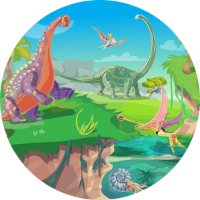
In this lesson pupils are given an insight into the origin and development of life on our planet Earth. Pupils have the opportunity to learn about the importance of atmosphere, as well as the difference between weather and climate. Pupils get to know different habitats and the animals living in them, creating an understanding of the great diversity of life on Earth and the importance of climate in it.
Guidelines Worksheet
In this lesson pupils are given an insight into a part of the natural phenomena found in the world: rain, wind, hail, storm and tornado. Vigorous natural phenomena or unusual changes in them are associated with climate change. Pupils will learn more in details about these natural phenomena, as well as about the water cycle in nature. The lesson provides also for practical activities, with pupils depicting and creating natural phenomena and wind related measuring devices.
Guidelines Worksheet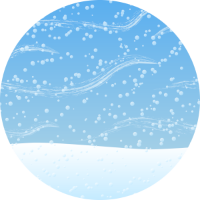
In this lesson pupils are given an insight into a part of the natural phenomena found in the world: earthquakes, volcanoes and their eruptions, tsunamis and flood. Floods, earthquakes and tsunamis can be affected by the current global climate change. Especially strong eruptions of volcanoes, during which ashes also get into the atmosphere, can affect the climate by temporarily lowering the temperature of the atmosphere. Pupils will learn more in details about these natural phenomena, as well as about the Earth's tectonic plates and their movements. The lesson provides also for practical activities, with pupils making seismographs - measuring devices which detect vibrations.
Guidelines Worksheet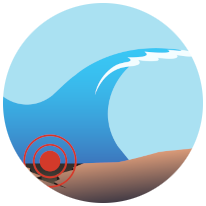
In this lesson pupils will have the possibility to find out the causes of climate change and identify ways to slow down global warming. Pupils will get to know about the greenhouse effect and its causes, pupils will discuss daily actions and habits that can either stop or increase climate change caused by global warming. The lesson will also cover the formation of smog, the ozone layer and the importance of its damage, the effects of ultraviolet rays and the principles to be followed when staying in the sun. The lesson provides also for practical activities, with pupils creating smog in a bottle, as well as watching the water level rise as ice melts.
Guidelines Worksheet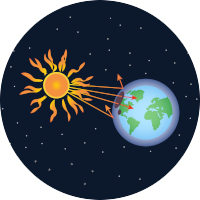
This lesson provides pupils with an insight of the World Ocean, its inhabitants, explorers and threats. As a result of human activity and climate change, water acidification occurs, waste, microplastics, and other pollutants enter the water, which harms the animals and plants living there. Pupils will also learn about fresh water and salt water, and the need to save water so that there is enough for everyone. Pupils will have the opportunity to look critically at different water usage habits in order to understand the responsible use of water on a daily basis. The lesson provides also for practical activities, with pupils performing two experiments: observing the effect of an acidic environment (vinegar) on an egg shell (similar to the shells of corals and shellfish living in water) and building their own water treatment plant.
Guidelines Worksheet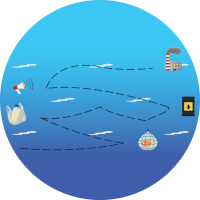
In this lesson pupils will be introduced to the living environment in hot and cold deserts, the animals and plants that live in them. Pupils will be made aware of the environmental changes that occur under the influence of global warming, i.e. how climate change affects hot deserts and cold ice deserts, and their inhabitants. During the lesson it will be possible to think about how each of us can act to reduce climate change, which has a negative impact on deserts. To make it more interesting, each pupil will be able to make his own desert animal - a camel - from reusable materials.
Guidelines Worksheet
In this lesson pupils will be introduced to the structure and diversity of forests. Pupils will develop an understanding of the threats affecting forests and what can be done to prevent harm. The activities in the lesson will help pupils understand how significant forests are for the animals that live in them, for people as a resource, and how important forests are for the entire planet and its climate. The lesson also includes practical activities, creating a sensory trail and an insect house from natural materials collected in the forest.
Guidelines Worksheet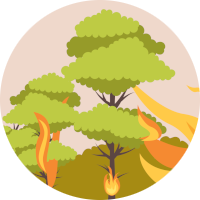
In this lesson pupils will be introduced to animals' adaptation to their living environment and how these habitats are changing as a result of climate change. Pupils will learn how animals adapt to life in heat, cold and temperate climate, how they disguise to hide. The activities in the lesson will help pupils understand that as a result of climate change animals must look for a new home, because the current climate is no longer suitable for living. The lesson also includes practical activities, making bird feeders and watering places (baths) from reusable materials.
Guidelines Worksheet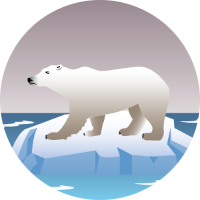
In this lesson pupils will be introduced to how plants can both suffer from the effects of global warming and help fight it. Pupils will learn how various changes caused by global warming negatively affect plants. The activities in the lesson will help pupils understand that at the same time plants are capable of reducing global warming and that it is important to introduce them into the urban environment as well. The lesson also includes practical activities, making decorative flower pots and models of green cities from reusable materials, as well as greening the classroom with self-made wheat or grass people.
Guidelines Worksheet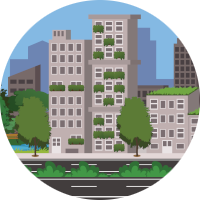
In this lesson pupils will be introduced to the green lifestyle. By carrying out the activities included in this lesson, pupils will learn about the human actions that can help preserve nature. Pupils will understand the importance of waste sorting, ways to save water, learn to choose green modes of transportation and prioritize renewable energy sources. The lesson also includes practical activities, making stationary holders (pencil-cases) from toilet paper rolls, as well as experimenting with the possibilities of water purification and using solar energy to roast a marshmallow.
Guidelines Worksheet
In this lesson pupils will be introduced to the work of the future profession - climatologist - and find out what we can do all together to conserve our planet Earth. The activities included in the lesson will help pupils strengthen their knowledge about the effects of climate change on Earth, as well as inspire them to take practical actions that save the environment. At the end of the lesson pupils will have the opportunity to receive the certificate of the young climatologist.
Guidelines